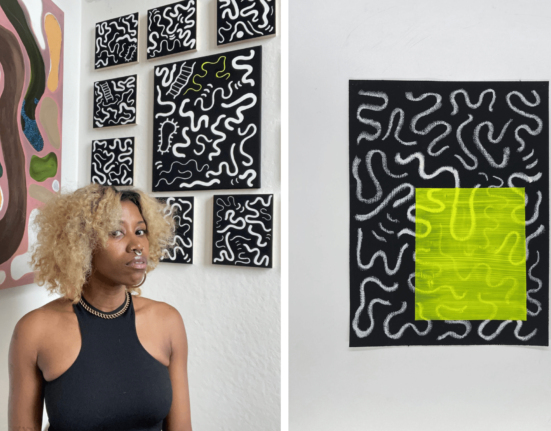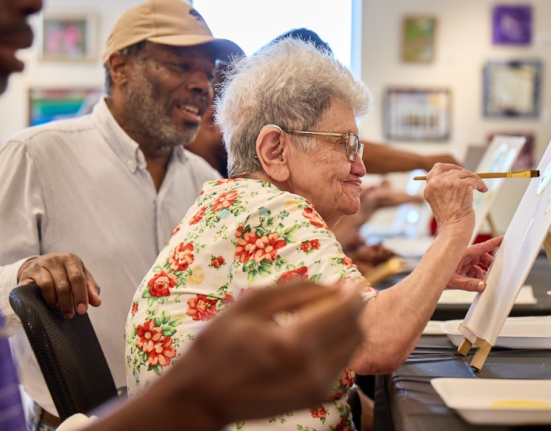Unlock the Editor’s Digest for free
Roula Khalaf, Editor of the FT, selects her favourite stories in this weekly newsletter.
To accompany an aperitif of R de Ruinart Brut champagne, guests for the new tasting menu at Rosewood London’s Mirror Room are being offered some rather curious nibbles. Piled up in a Martini glass, these “peanut pearls” look at first to be monkey nuts. But appearances are deceptive. “They’re whole peanut shells emptied of their nuts and filled with two or three raisins,” says Sydney-born, New York-raised Imogen Kwok, who originated the menu. “The raisins – a nod to the Ruinart grape – are covered in sheep’s-milk yoghurt and decorated with iridescent paint and sugar dust, then inserted in shells that are resealed with edible glue.”
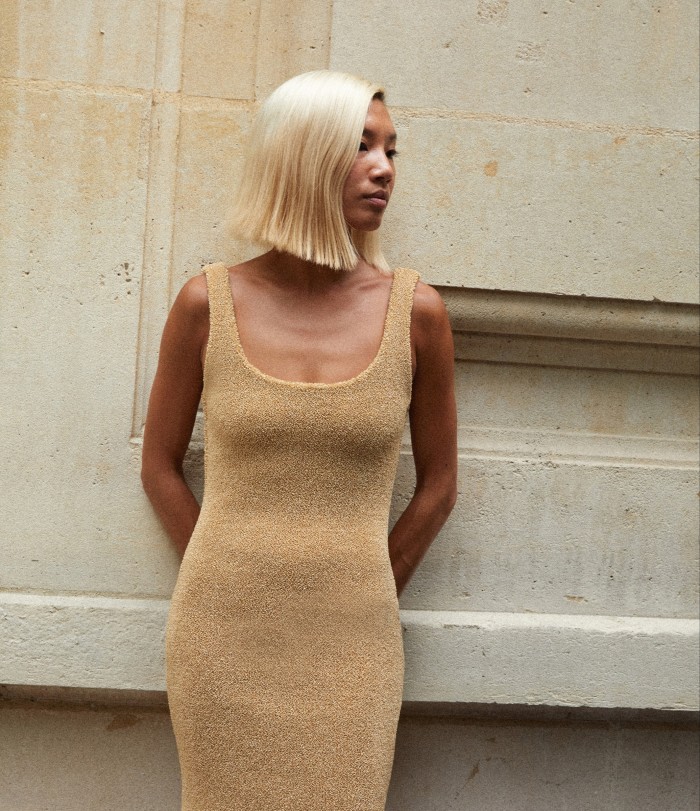
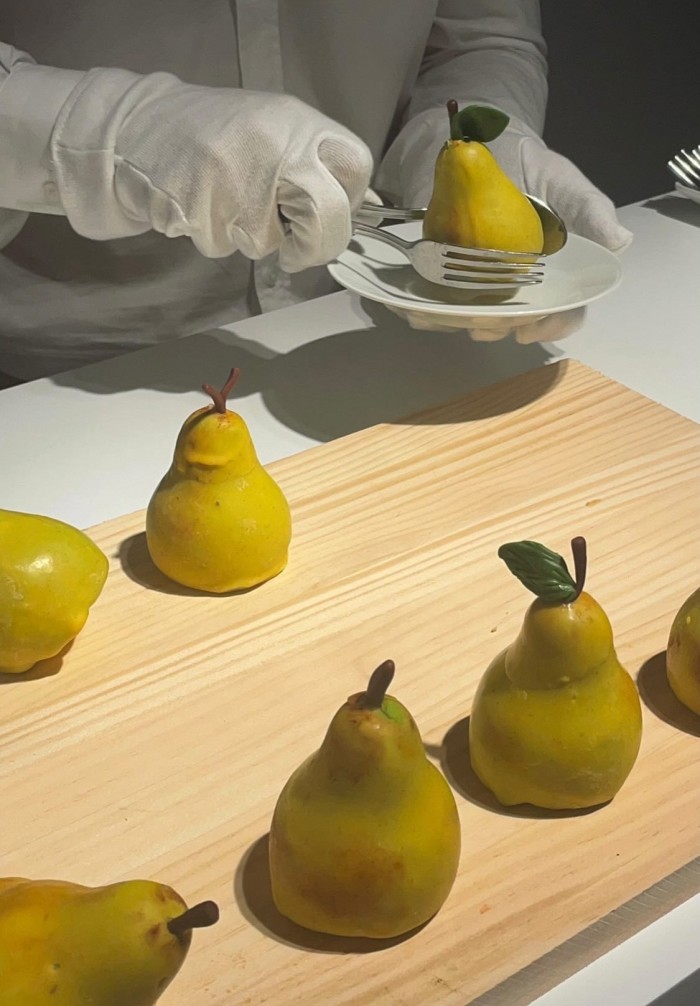
Kwok is one of a growing number of practitioners turning our perceptions of food on their head. Since moving to London in 2019, Kwok – who studied art history at university and has worked in food styling and photography as well as restaurant kitchens – has forged a reputation for staging multisensory installations where the table is her canvas and food her artistic medium. For the launch of Hermès’s fragrance Un Jardin à Cythère, for instance, she constructed a Greek island dreamscape filled with chalky rounds of cheese, drifts of crackers and a pond-like platter of green olives.
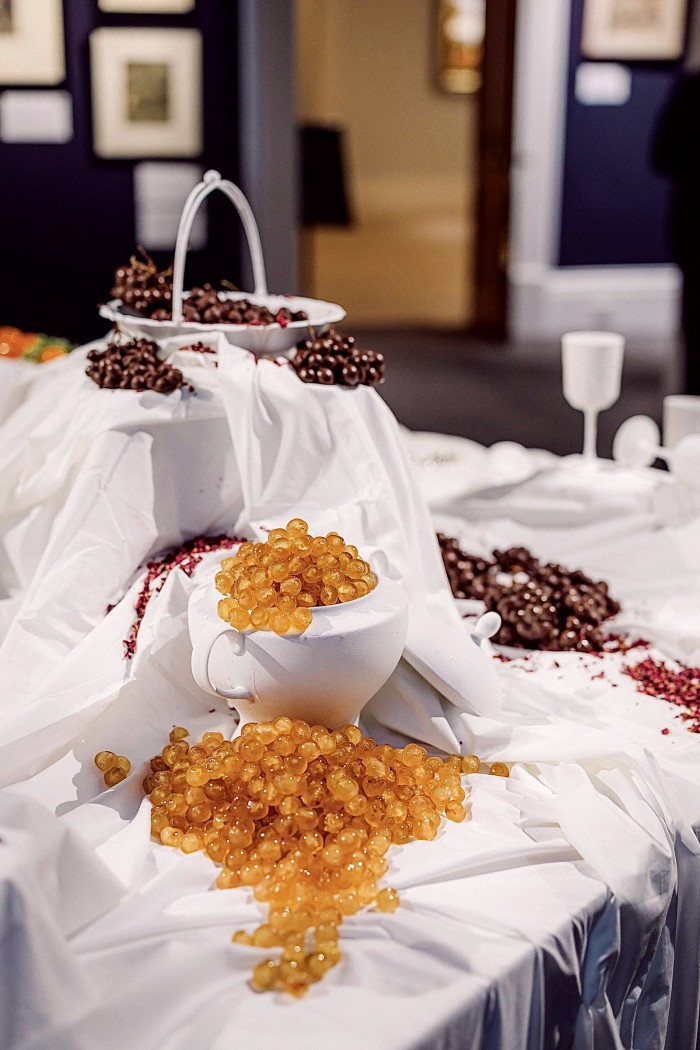
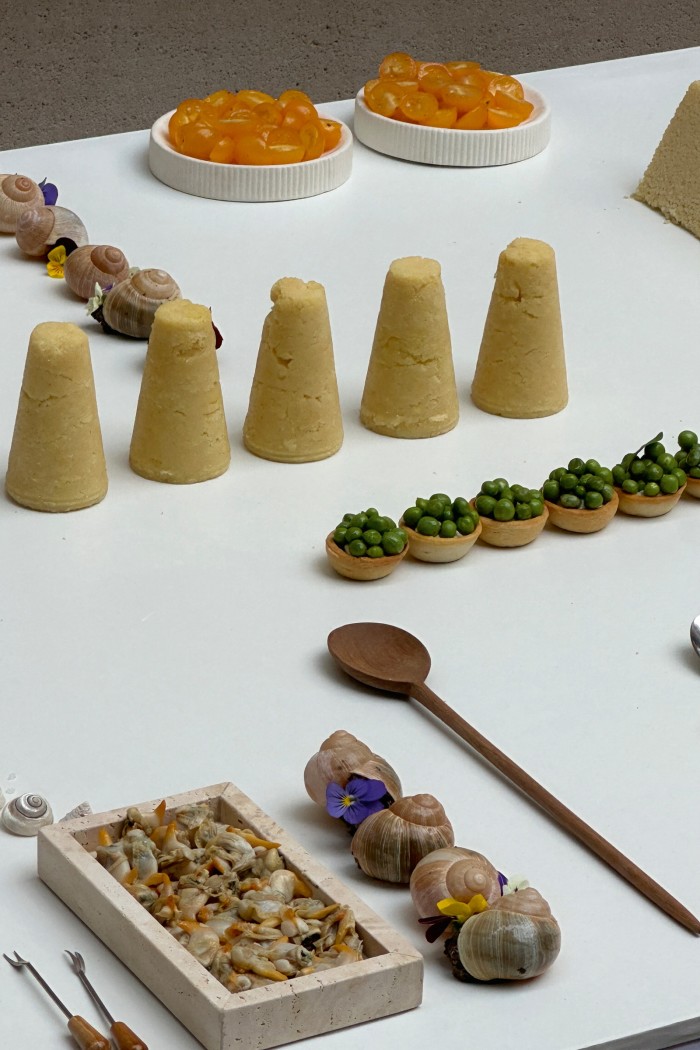
Many of her foodscapes replicate art. An installation to mark the launch of Sotheby’s Old Masters Week in London in 2022 consisted of food arranged on a table in cascading folds of white linen. The composition recalled golden-age Dutch and Flemish still lifes. But the artifice was even more meticulous. Kwok had employed glacé fruit instead of fresh produce to reproduce the particular luminosity of berries in Dutch painter Adriaen Coorte’s canvases. She wasn’t simply recreating an arrangement of food. She was duplicating the painterly effect with which that food had been rendered. Food imitating art imitating life.
Just as beguiling are her trompe l’oeils – edible bites that look like one thing but are actually another. In April 2022, she concocted an appetiser for a Comme Si event in New York, which she dubbed “an egg but not an egg”. The snack looked like a hardboiled egg until the shell was cracked open. Instead, the white revealed a steaming ball of rice, which guests were invited to dip into seaweed salt and eat. You can watch a video of the dish on Kwok’s Instagram feed. One’s natural response is to ask how on earth she did it. Like a magician, she won’t say, except to note that it took a long time. “I’m always looking for an oomph factor,” she says.
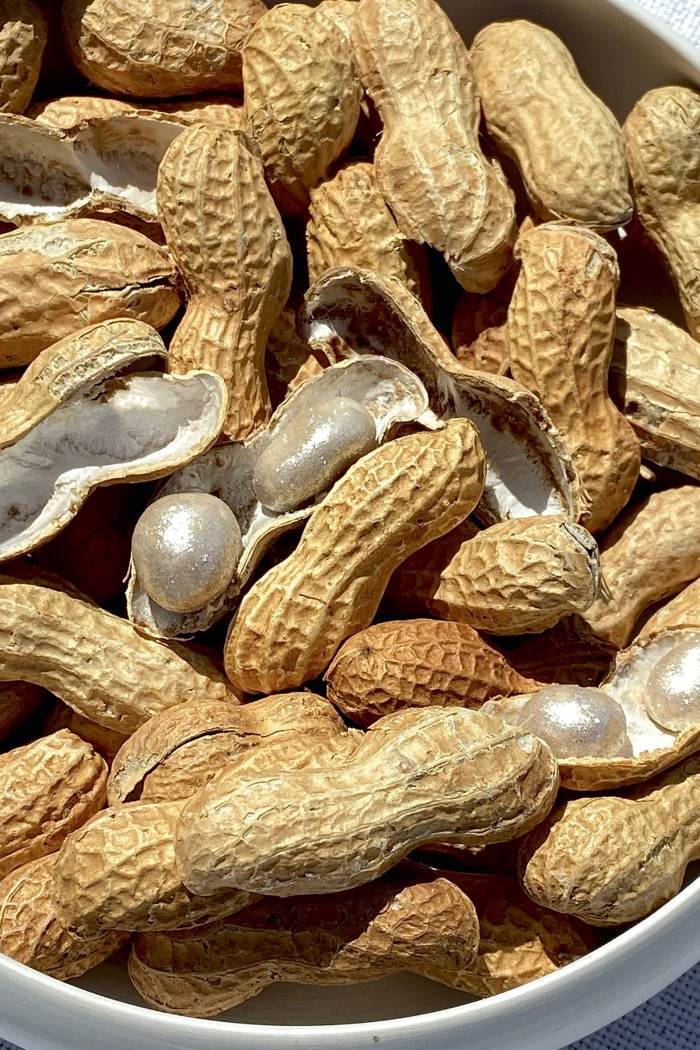
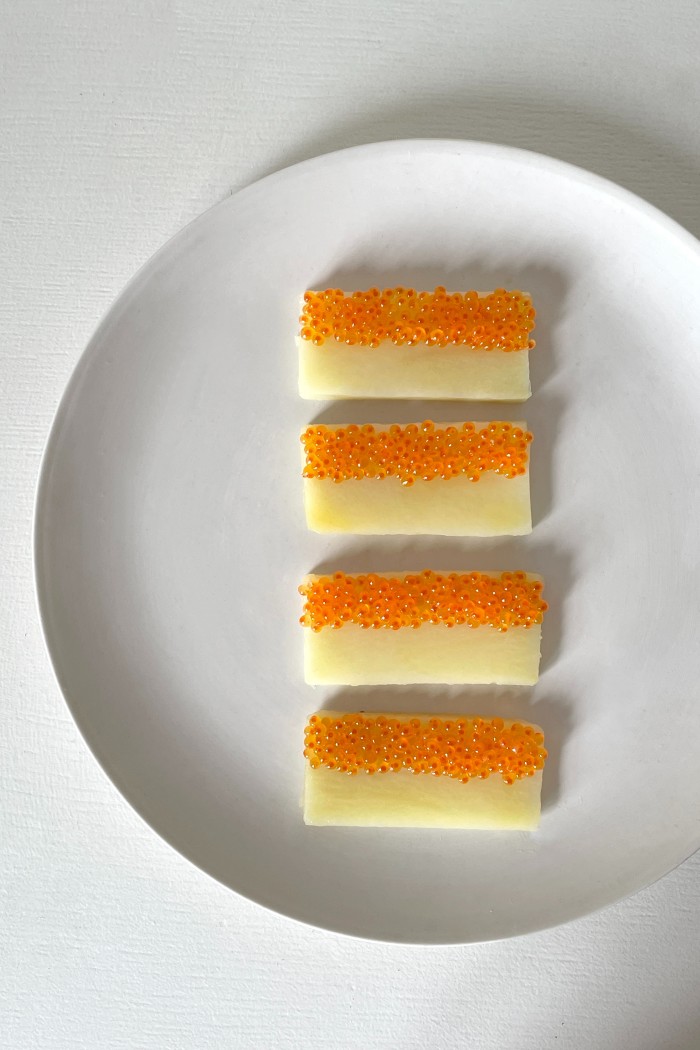
Culinary trompe l’oeil has a long tradition that stretches from sotelties at banquets in the Middle Ages (where guests might encounter castles made of capons) to the kitschy centrepieces that became all the rage in the ’70s (including the radish pigs, watermelon swans and frankfurter peacocks memorialised on the Instagram feed @70sdinnerparty). More recently, trompe l’oeil became a fixture of molecular gastronomy in the form of tricksy dishes such as Ferran Adrià’s liquid olive and Heston Blumenthal’s meat fruit.
For New York-based artist and HTSI columnist Laila Gohar, trompe l’oeil has always fascinated as “the closest thing we get to magic in real life”. Born in Egypt, Gohar moved to New York after college and started out in traditional catering before adopting the more conceptual, surreal approach for which she is known today. “Most of my ideas are pretty simple,” she says. “People can tell a lot of time and consideration has gone into them. But like conceptual art, you think, ‘That’s cool, I could have thought of that, but I didn’t.’”

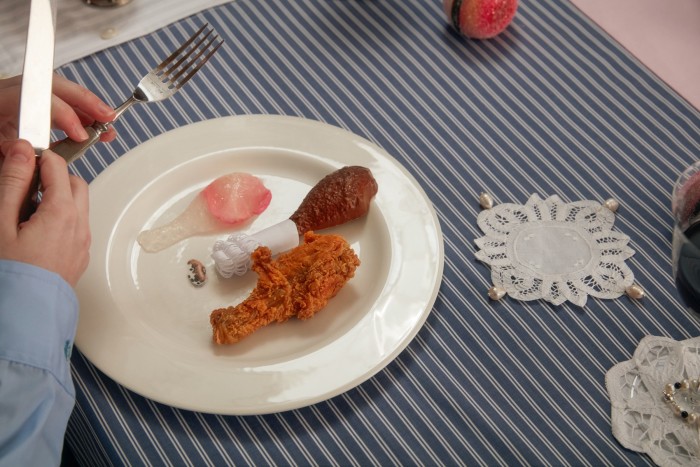
In 2020, Gohar collaborated with designer Sam Stewart on a piece for a group show called Comfort at Friedman Benda Gallery in New York. Entitled Loaf, the work looked like a La-Z-Boy chair (“the symbol of comfort in America”, says Gohar) but was made out of bread (“the ultimate comfort food”). The piece drew attention to its materials and left you marvelling at its wizardry. How could brioche be made to look like creased tan leather? Let’s not overthink it. A bread sofa simply elicits joy, particularly among younger visitors. One little girl was pictured “examining the chair, questioning if it’s real, leaning on it, tasting it,” Gohar recalls. “There isn’t any pretence with children. They see it and react.”
Last month, she returned to using bread as a medium for Baby Bread Bed, made for the Fashion Museum in Antwerp. It featured a child’s quilt patchworked from swatches of stitched-together flatbread. “The decorative mending is a way of embracing fragility… much like my own experience with motherhood,” she explained. Other works have pushed the illusion even further. In September, Gohar unveiled an installation at the Prince de Galles hotel in Paris – “my ultimate trompe l’oeil to date” – consisting of giant cakes seemingly made out of minty fondant and topped with enormous cherries. It was impossible to tell what was cake and what was inedible construct. “Dreams blurred with reality and reality blurred with magic” was how Gohar described it.

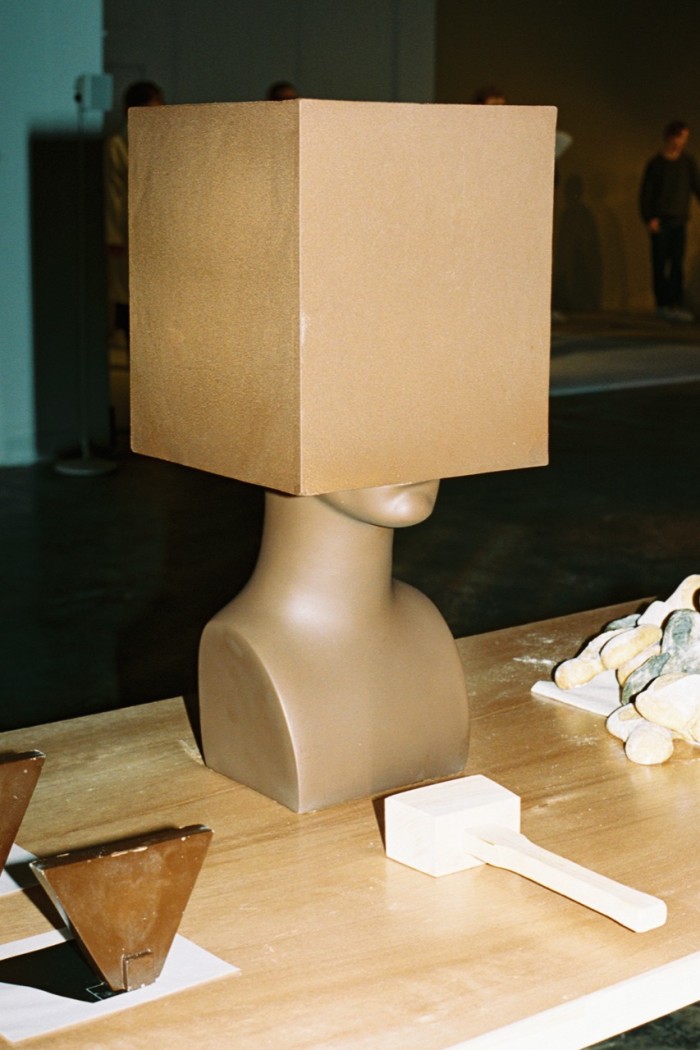
Even when spectators know a piece is edible, they can be reluctant to shatter the illusion and break its pristine beauty. “There is a tension in perfection,” says Gohar, who often has to urge “a courageous first person” to tuck in. A chocolate bust made with Mexican chocolatier Casa Bosques in 2019 was dramatically smashed apart with a mallet so people could pick off shards to eat. Such art is meant to be consumed. Its destruction – “I wouldn’t even call it destruction as it’s part of its life cycle,” says Gohar – releases tension at sometimes precious fashion and art events like an icebreaker.
Gohar is more concerned with how her works are consumed in real life. But influencers such as Natalie Sideserf
(@sideserfcakes), Ben Cullen (@the_bakeking) and Tuba Geçkil (@redrosecake_tubageckil) have generated huge followings creating trompe l’oeil cakes and tutorials entirely for a digital audience. Watching their videos, you go from thinking “that can’t be cake” to delighting in the tricks behind the artifice. The same pleasures underpin the Netflix game show Is it Cake?

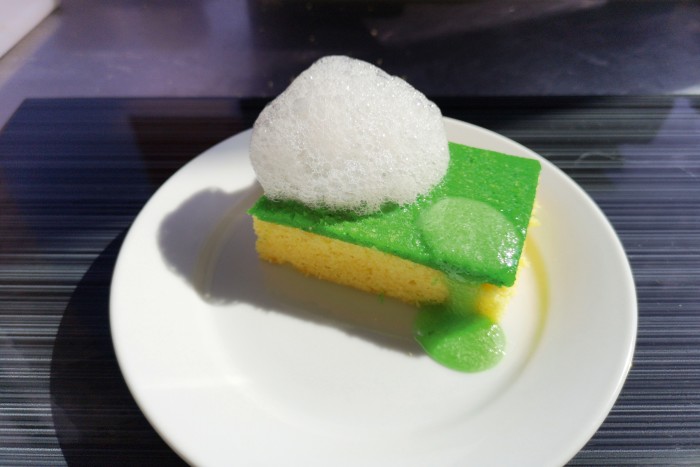
Ben Churchill aka “The Food Illusionist” (@chefbenchurchill) is a British chef who’s worked in pubs, restaurants, corporate catering and now at a private school in the Cotswolds. His outrageous online creations include desserts that look like comfort food (such as beans on toast or pizza); desserts that resemble food gone bad (like a mouldy satsuma); and desserts that look like cleaning products.
His washing-up sponge cake, for example, was prompted when he noticed how similar olive-oil cake sponge was in colour to yellow scourers. To complete the illusion, he topped it with green-dyed crumble and added lemon foam (made using soya lecithin) to suggest suds. It’s now his most famous (and copied) dessert: “There are cafés in Japan serving it,” he says. His ickier creations trigger their own weird response. “When you eat [the ashtray panna cotta], it makes you cough,” he says. “You think it’s a tray full of stubs and ash.”
His next challenge is savoury foods that look like traditional desserts: “I’m playing around with the idea of French onion soup served in the form of a treacle tart,” he says. “The tart would be made from baked and blitzed croutons and cheese, then filled with thickened onion soup and sprinkled with breadcrumbs. Another idea is shepherd’s pie cake.” The possibilities are endless.

